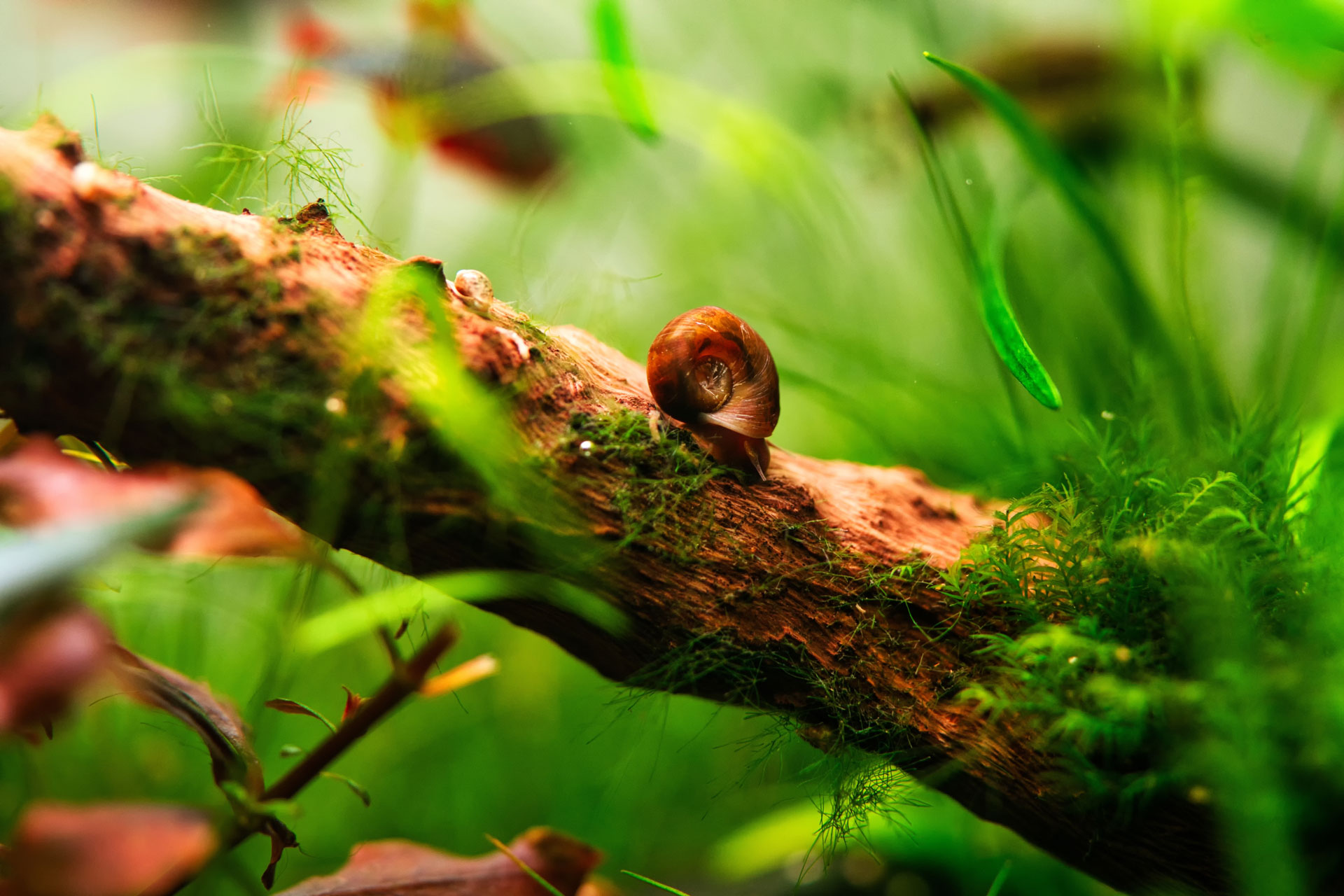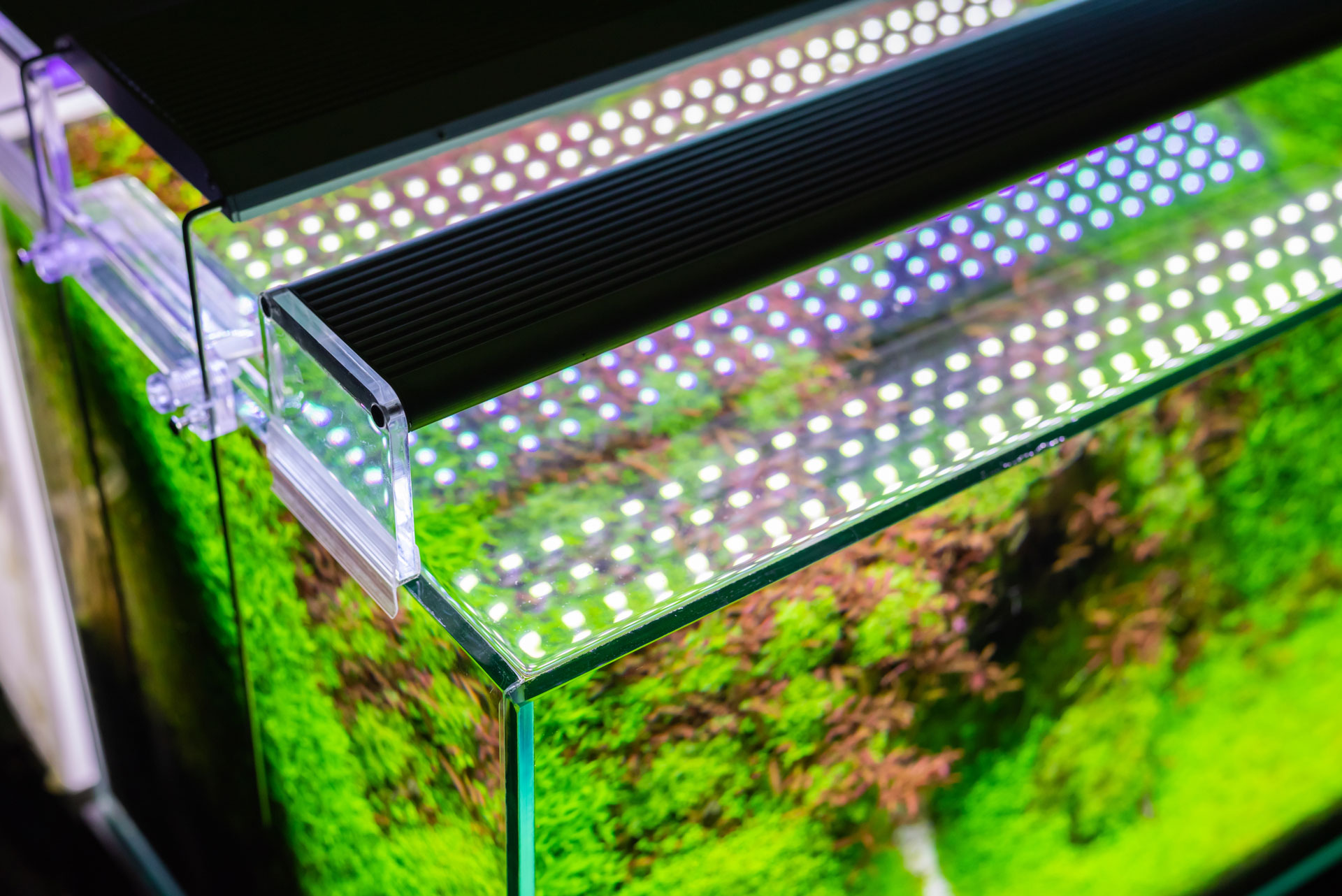Hints and tips on fertilisation and plant care
In order to be flexible for all individual practical requirements, our aquarium fertilisers have been developed in the form of a modular system. The focus is on our complete iron fertiliser Ferrdrakon and KramerDrak for extremely intensively lit plant tanks.
The daily fertiliser Daydrakon for greatly increased iron requirements, the complete potassium fertiliser Ferrdrakon K for plants in need of potassium and the macronutrient fertilisers Eudrakon N and Eudrakon P (nitrate, ammonium, phosphate) supplement the core components of the system as required.


Iron level
Tracking the iron content in the aquarium water as a key parameter is useful and can make it easier for beginners in particular to get to grips with the subject. A value of 0.05 - 0.1 mg/l is optimal, values above 0.2 mg/l should be avoided, as chronic toxic damage to the fish cannot be ruled out in the long term. Values above 1 - 2 mg/l are already acutely toxic. Unfortunately, not all commercially available test kits are capable of quantitatively detecting chelated iron.
Electronic ballasts
After replacing the conventional ballasts with electronic ballasts (EBs), plant growth stagnated for almost 6 weeks, although the tubes, lighting times, water values and fertilisation intervals etc. were not changed. Hardly any new leaves formed. Growth only returned to normal after about 8 weeks.
The only thing that had changed was the frequency with which the fluorescent tubes were operated. With conventional ballasts this is 100 Hz (double the mains frequency - each voltage half-wave causes the tube to light up), with ECGs it is around 10 - 100 kHz.
Apparently, the plants also notice this subtle change and initially react with growth arrest until they have become accustomed to this change...!
(according to the experience of Jens Meyer and other aquarists)
Deficiency symptoms
In a pure plant tank, deficiency symptoms can easily occur without the additional addition of N/P-containing substances: with a nitrate value < 1 ppm and a phosphate value < 0.1 ppm, the growth of many plants can come to a standstill even with an optimum supply of trace nutrients (but does not have to!).
In this case, additional fertilisation with a normal houseplant fertiliser or an N/P/K fertiliser in very low doses is definitely advisable.
However, as aquatic plants primarily use ammonium as a source of nitrogen and have to use energy to reduce the available nitrate, it makes sense to fertilise with very small amounts of ammonium salts if there is a latent nitrogen deficiency. However, due to the risk of toxic ammonia forming, only if the pH of the tank is < 7.
Ammonium carbonate (also found as staghorn salt on the baking shelf) or the dropwise addition of diluted ammonia solution (also forms ammonium carbonate in the acidic aquarium water with the dissolvedCO2!
If there is a simultaneous phosphate deficiency, you can also use an ammonium phosphate from the chemicals trade.
Mixing and diluting different fertilisers
Our fertilisers can be mixed in any ratio. However, it is highly recommended that you carry out your own tests on the durability of these mixtures, especially before making large quantities.
The fertilisers can also be diluted. However, as this also dilutes the preservative, the effect of which is highly dependent on the concentration, only dilute the quantities that are intended for immediate use.
The solutions should be stored away from light, which applies even more to the diluted solutions.
Tap water, reverse osmosis water or demineralised water are suitable. If the tap water is very hard, reverse osmosis water or demineralised water should be preferred if possible. This water should be as germ-free as possible due to the diluted preservative, so please do not use aquarium water or similar.
Myths and legends
Aquatic plants can only utilise bivalent iron
This is only partly true! It is true that aquatic plants can only absorb divalent iron, but they can mobilise fixed iron through the targeted release of their own chelators. The iron is then reduced on the surface of the cells and both the complete complexes and bare Fe(II) can be taken up. In the plant cell, it is oxidised back to trivalent iron and chelated with citrate; further transport then takes place as iron(III) citrate.
The success of iron fertilisation with Fetrilon, an EDTA chelate complex with trivalent iron, shows how this works in practice.
In addition, there is always an equilibrium of Fe(II) and Fe(III) in the water, the equilibrium position of which is determined by the redox potential of the entire tank. Under aquarium conditions, only a small proportion of the iron is present as Fe(II). However, when the small amount of Fe(II) is consumed by aquatic plants or other processes, Fe(II) is immediately re-formed from the equilibrium.
Chelators prevent the oxidation of iron
Wrong! However, they prevent trivalent iron from precipitating in the form of insoluble phosphates and hydroxides and disappearing in the filter sludge, as the iron(III) chelate complexes, like the corresponding iron(II) complexes, are extremely soluble in water.
Chelate complexes must be slowly "cracked" by bacteria
Not completely correct!
According to the latest very plausible theories, the process takes place in stages:
Chelate-iron complexes are sensitive to light (blue and UV light), so during the day the chelators of the complexes are continuously converted into an ineffective, no longer chelating form by the effect of light. Oxidation stage III iron released in this way does not remain in solution but precipitates. A fine mist of iron hydroxides therefore "trickles" onto the plants throughout the day. This fine "dust" can be mobilised by the plant's own chelators and absorbed by the plants.
Phosphate precipitation
Iron phosphate is difficult to dissolve under aquarium conditions, so large quantities of iron can be bound in the filter sludge at high phosphate concentrations. If an attempt is made to reduce the phosphate level by changing the water, some of the iron phosphate will dissolve again and the old level (max. 6 mg/l) will be reached again in a very short time.
With normal to low phosphate levels, excessive iron fertilisation can also lead to the precipitation of iron phosphate and thus cause growth problems by fixing the phosphate.
Calcium phosphate is also only soluble to a limited extent in harder water and partially precipitates. As a result, the old phosphate level is restored within a very short time after a water change due to re-dissolution processes.
Nitrogen source chelators
Although our fertilisers are nitrate-free, the chelators contain considerable amounts of nitrogen (N).
Assuming that these chelators are completely mineralised by the filter bacteria in the aquarium (which is not the case), one litre of Ferrdrakon or Daydrakon would contain 3.243 g or 2.822 g of nitrate precursors.
Although this is considerably less than is supplied by the fish's metabolism, it still represents a further source of eutrophication in the aquarium water.
Droplet size
The size of a drop of a liquid or solution is determined by the surface tension and gravity. This value is largely constant for aqueous solutions and is around 0.05 ml.
UV water clarifier
UV water clarifiers and fertilisation with chelate-stabilised fertilisers interfere with each other. The metal chelate complexes are destroyed by the radiation in a more or less short time. Within a few hours to days, the iron value drops to zero.
You can try to counteract this by switching to daily fertilisation or by adding larger quantities of a good peat extract; it seems that the complexes of the metals with the fulvic acids from the peat are more stable against UV light.
Invertebrates
Is it possible that Ferrdrakon (e.g. because of the copper content) is harmful to invertebrates (shrimps, crayfish etc.) in the long term?
The amount of copper added with weekly fertilisation of the recommended amount of Ferrdrakon is only 2 µg/l Cu.
Krause gives the following lower values for expected damage in the "Aquarium Water Manual":
0.03 mg/l algae, bacteria
0.08 mg/l higher aquatic plants
0.10 mg/l fish
It should be noted that the toxic effect of chelated copper drops to 1 % of that of uncomplexed copper (determined on water fleas, among others).
In an established aquarium, free copper also ends up extremely quickly in the filter sludge (due to bacterial accumulation) or in the plants.
This minimum amount of copper is simply necessary to prevent plants from developing deficiency symptoms. We have therefore already orientated ourselves to the lower limit.
See also Copper for plants / Copper for animals
Conclusion: The all-clear!
However, a distinction must be made between this and the supply via the tap water if water is taken from a water heater with a copper-containing heat exchanger or from copper water pipes. Here the copper content can reach 2 - 15 mg/l in extreme cases. Even a good water conditioner can no longer mask this.
The only thing that helps here is to drain off enough stale water or to look for another tap (it goes without saying that such heavily contaminated water is not particularly suitable for human consumption either; keyword: cyanosis in babies).

